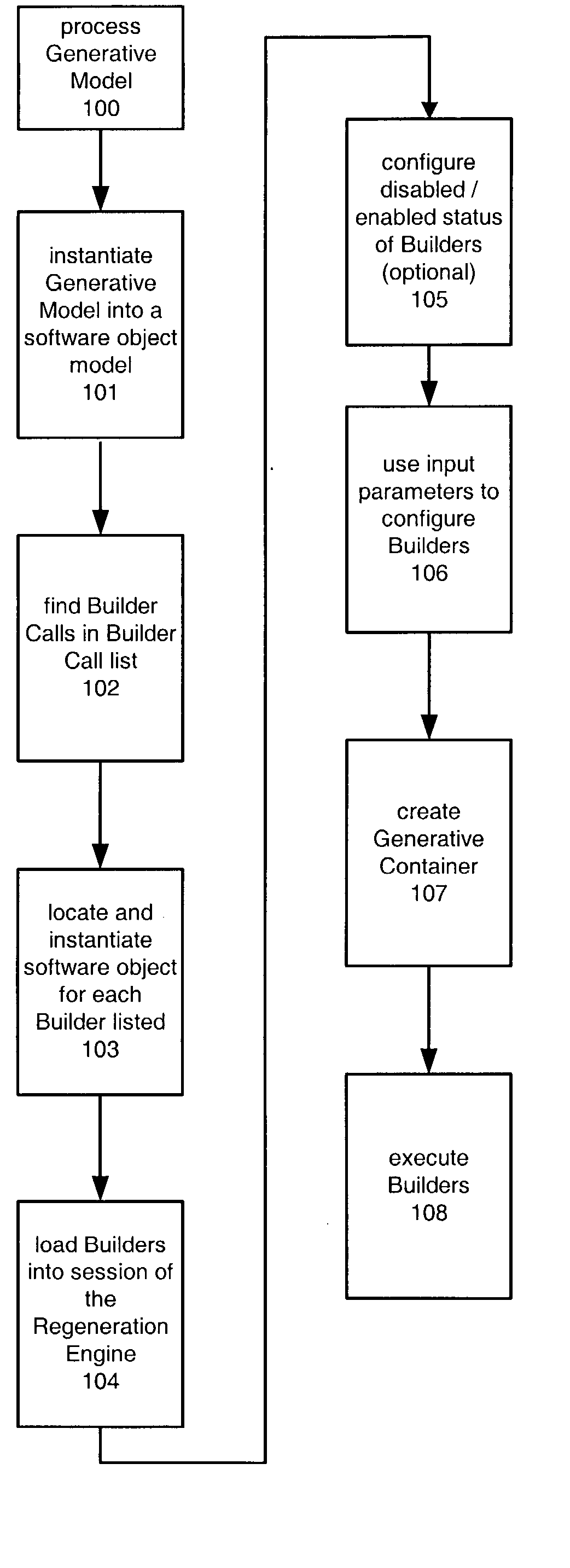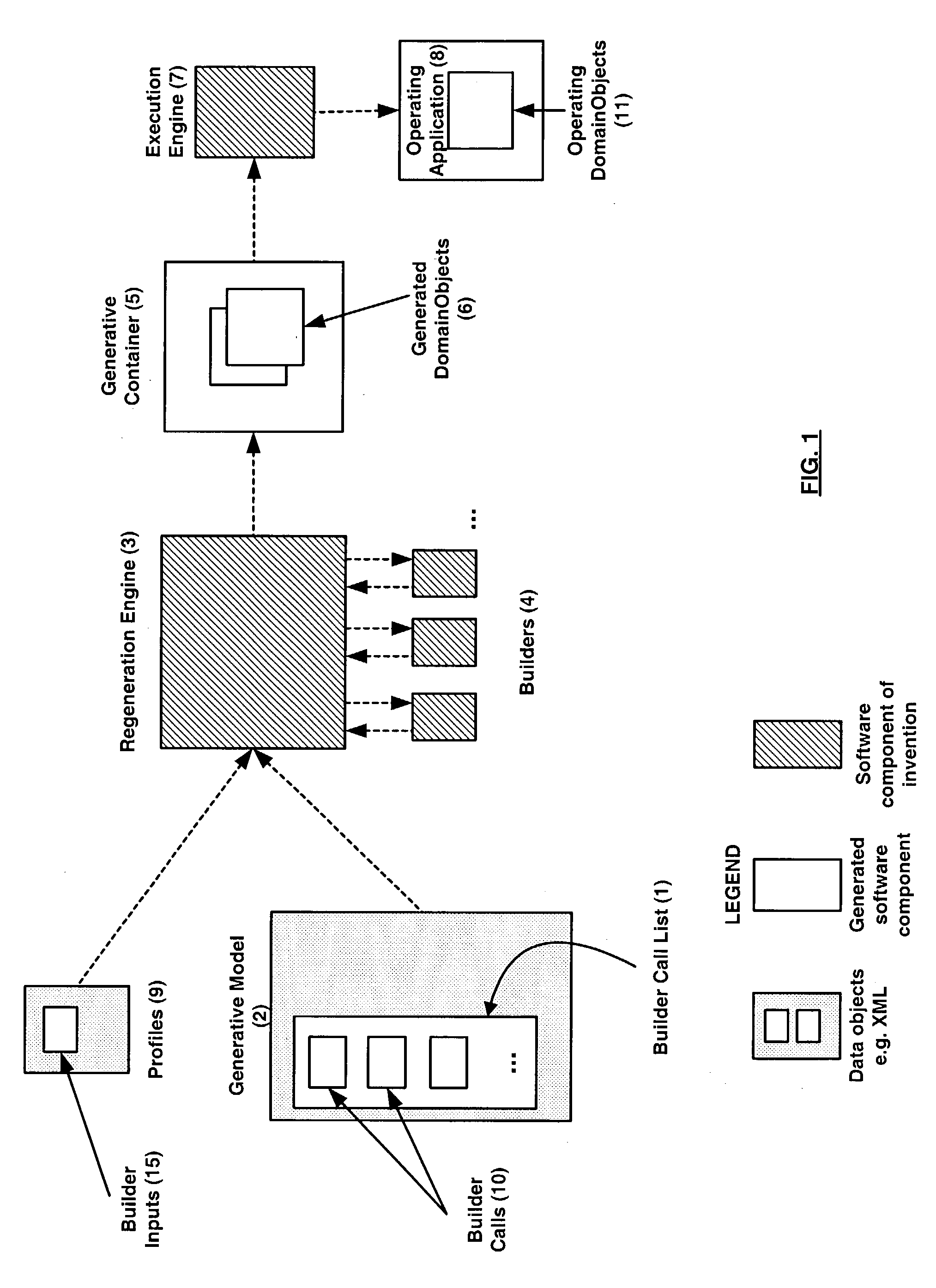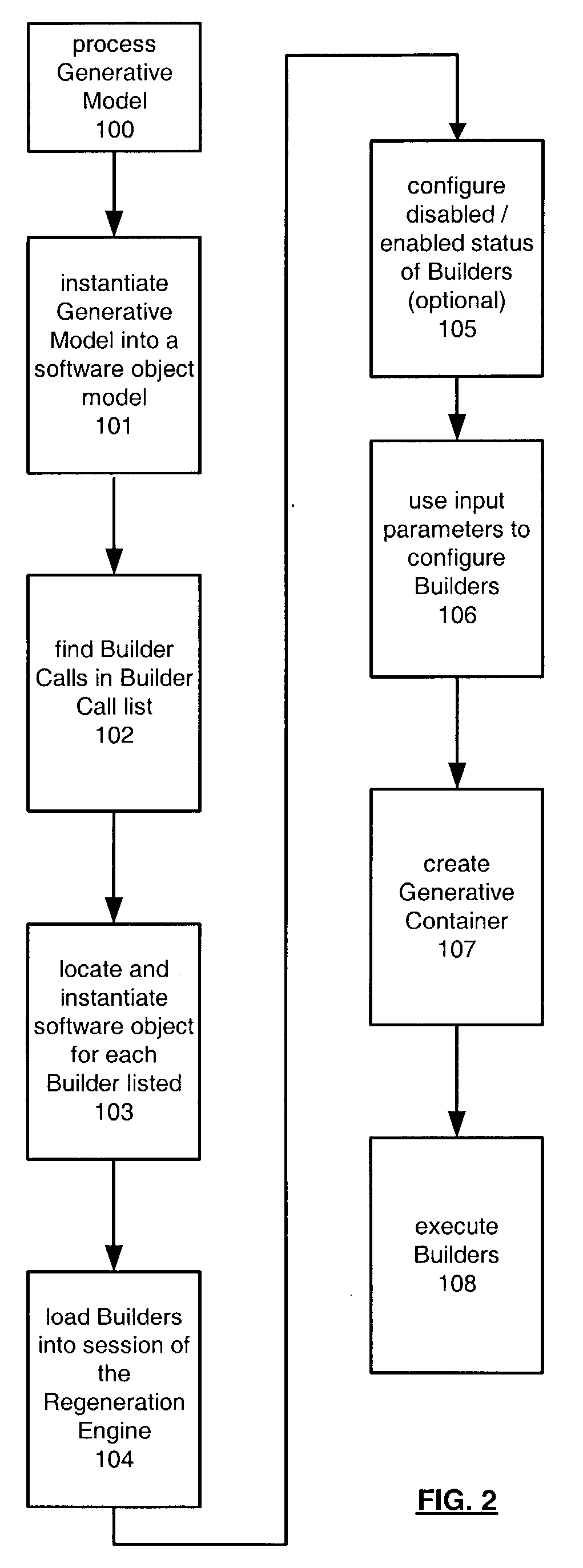Method and apparatus for creating software objects
a software object and method technology, applied in the field of computer software, can solve the problems of chance of making an error, the explicit nature of these tools has not changed, and the number of limitations in the approach to creating source objects
- Summary
- Abstract
- Description
- Claims
- Application Information
AI Technical Summary
Benefits of technology
Problems solved by technology
Method used
Image
Examples
case 1
[0185] Case 1
[0186] if (a>0) {action1( );
[0187] }
[0188] Following is an example of two behaviors, where the second behavior has a condition, which is the negative of the condition of the first behavior. This is the familiar if-then-else behavior.
case 2
[0189] Case 2
[0190] if (a>0) {action1( );
[0191] } else {action0( );
[0192] }
[0193] FIG. 13 shows a graphical representation of Case 2 expressed in the rule format. Base Rule (58) (rule1) has a condition (57) and two actions (59) and (60). Again, a Base Rule can have any patterns representing its pre and test conditions, and any two actions. In addition, a Base Rule may also have no action or actions associated with the then and else cases.
[0194] The Base Rule Builder also has optional inputs for associating the behavior with a "from" state, and a pair of "to" states associated with the "then" and "else" cases. By specifying "from" and "to" states via the Builder Input parameters, the user supplies the Builder with information that enables it to construct additional patterns in the base rule conditions that ensure that the computing system possesses the from state in order to activate the behavior and cause either the "then" or "else" actions to execute. By specifying a "To" state for...
case 3
[0195] Case 3 shows one of many ways in which a Base Rule can have additional patterns and actions that cause it to exhibit additional behaviors. Here, the Base Rule is able to activate if the phase is at a RUN state. If it is, then the conditions are checked, and the then or else actions may execute. In addition, the rule causes the phase to change to RUN, or RESET. FIG. 14 shows the corresponding Base Rule 62 (rule1), which has conditions (63) and (64). Note that condition (63) is a phase check. Once the conditions are checked, then either action (65) and (67) is executed, along with the appropriate phase setting mechanism (66) or (68).
[0196] The Base Rule Builder has an optional input called: Fire Once Before Reset, which can be set to true or false. This Builder Input causes the Builder to determine whether or not to construct additional conditions and actions in the rule that govern the rule's ability to fire multiple times before the state of the entire system logic object has...
PUM
 Login to View More
Login to View More Abstract
Description
Claims
Application Information
 Login to View More
Login to View More - R&D
- Intellectual Property
- Life Sciences
- Materials
- Tech Scout
- Unparalleled Data Quality
- Higher Quality Content
- 60% Fewer Hallucinations
Browse by: Latest US Patents, China's latest patents, Technical Efficacy Thesaurus, Application Domain, Technology Topic, Popular Technical Reports.
© 2025 PatSnap. All rights reserved.Legal|Privacy policy|Modern Slavery Act Transparency Statement|Sitemap|About US| Contact US: help@patsnap.com



